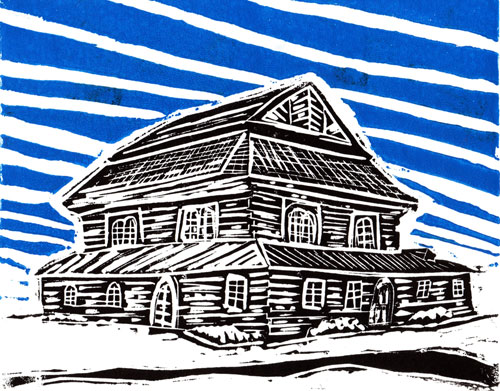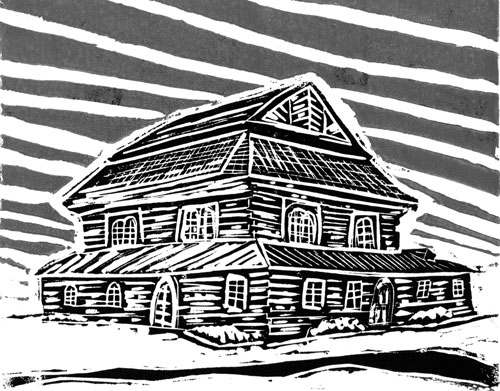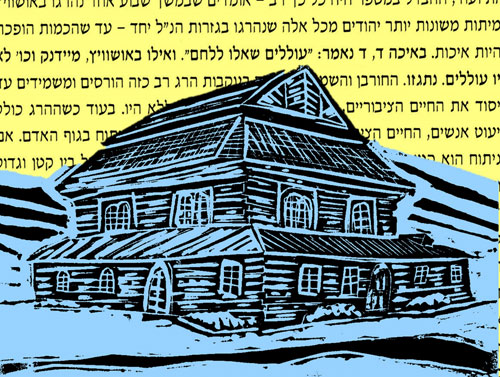Lost Treasures: The Wooden Synagogues of Eastern Europe The Artwork of Bill Farran
Sidra, Poland - Original Linocut, Color
Sidra, Poland - Original Linocut, Color
Sidra was a small town located in the Bialystok region of Poland, a region that was quite rural with an ethnically mixed population. The area had been inhabited for centuries by members of different nations and religions: Belarusians, Lithuanians, Ukrainians, Rusyns, Romanis, Tatars, and Jews. Religions consisted of Roman Catholics, Russian, Greek and Ukrainian Orthodox Christians, Muslims, and Jews who were Orthodox, Conservative, and Progressive.
The earliest known Jewish community was in the 17th century. The wooden synagogue was built by the end of the 18th or early 19th century. The main hall was square and was sunk three steps below the vestibule floor level. The ceiling was flat.
In 1921, the Jewish population consisted of 465 people. The Jewish town of Sidra was destroyed by the Nazis during World War II.
Purchase a print
Original linocut prints are 8x10 inches, and are available either unmatted or in an 11x14 matte.
I also offer matted 5x7 digital prints. These prints are created from high-res digital images and come in an 8x10 matte.
For this synagogue I have created an additional digital print, with Hebrew lettering in the background. These prints are also created from high-res digital images and come in an 8x10 matte.





